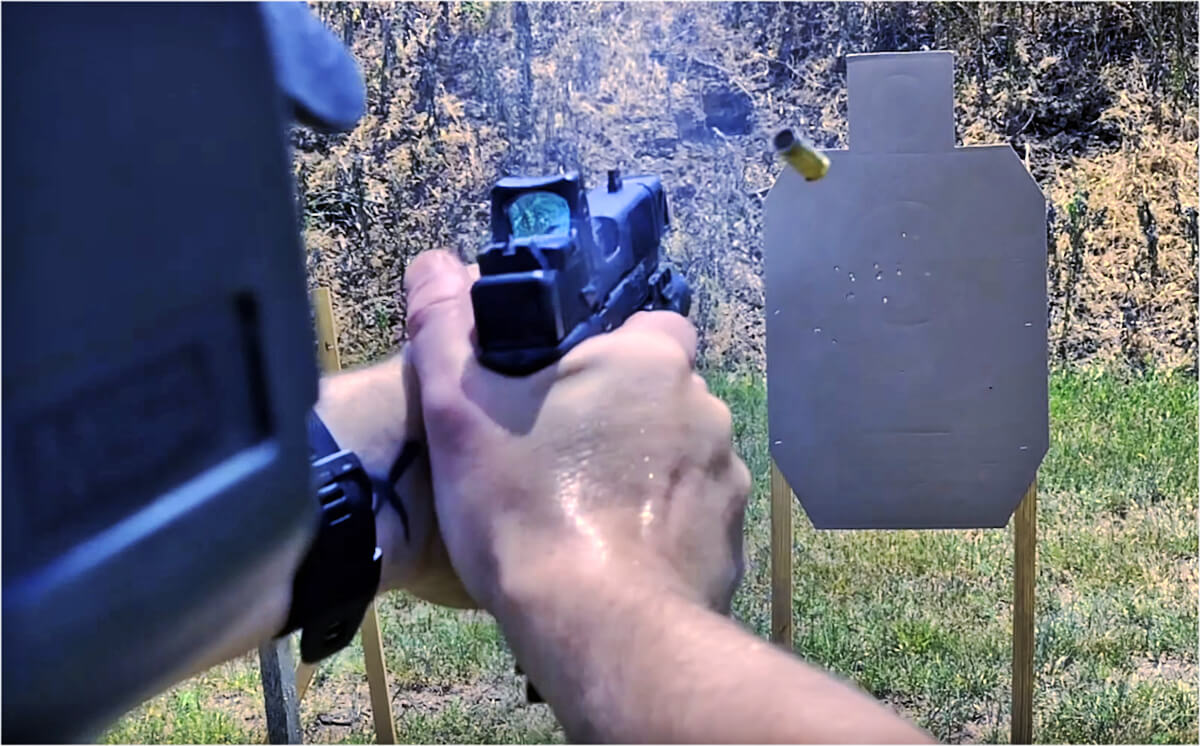Three Steps To Develop Your Ability to Shoot Consistently Well

The ability to shoot consistently well is one of the most elusive and coveted goals of any defensive or competitive shooter. It provides both the technical advantage and skill-building platform upon which to further expand your shooting abilities. What steps can you take to consistently shoot well?
A common adage you often hear in the professional firearms training community is “First time is luck, second time chance, and third time is skill.” Traditional shooting standards such as the Bill Drill, the Wilson Five-by-Five, and the like, require the shooter to perform five or more consecutive repetitions Why? Because it demonstrates consistency in repeat shooting performance.
The first step toward this coveted goal is to straight-up admit to yourself that you’re not yet at the skill level that you want to be. If you were, then you would be able to demonstrate it. Although that’s a jagged little pill to swallow, it is essential to find the motivation, discipline, and commitment required to reach that next level.
Only after you can hold yourself personally accountable (self-motivation, discipline, and commitment) may you then embark on that journey up the proverbial stairway to performance. Adopting this mindset, unleashing your motivation, engaging your discipline, and standing firmly in your commitment affords you the opportunity to pursue the lofty and worthy terminal objective of earning consistency.
Consistency in shooting well can be defined as “your ability to repeatedly perform at a known skill level.” In meeting the expectations of this definition, there are three steps that you can take to help develop your abilities to shoot consistently well: familiarity, comfort, and confidence.
1. Familiarity
The first stride on the road to repeatedly perform at a known skill level is to become intimately familiar with exactly what that level is. To find this line of demarcation is to differentiate between what works and what doesn’t work. Applying a correct shooting process is what works.
When you follow a shooting process such as “bring stability to alignment and break the shot without disturbing that alignment”, you find that it works every time. Completing each of the subprocesses within that process (minutiae) is what makes good hits and in acceptable times.
Should you take a mental approach such as ‘try to go fast’ or ‘try to be more accurate’ then you are trying and not shooting, something which is not recommended as part of your regular training regimen along with anything else that may pull you away from following the shooting process.
Clear your mind of all but the mental focus needed to stay in the shooting process. Know what works and what doesn’t work.

2. Comfort
Once you have built this familiarization and can instinctively discern “right” from “wrong” — that is, doing what it takes to make that shot versus not doing what it takes to make that shot — you have established the yellow and white lines on the long and winding road toward comfort.
Why is comfort is such a critical step in the process? Under duress, you will default to your lowest level of comfort to ‘guarantee’ the shot.
In a defensive situation or in the heat of competition, you can’t afford to be reckless and push past your headlights so far that the wheels fall off your shooting process, and you crash. The converse is also true — you can’t be too conservative at the expense of time. The sweet spot is somewhere in between the boundaries of a guaranteed hit and the edge of your comfort zone.
The goal, of course, is to always step outside your comfort zone by pushing that envelop into uncharted ground. Forcing the wheels to fall off and learning from each mistake affords you access to uncharted territory. Once you have walked all over that new real estate you have moved that boundary marker a bit further, and in doing so have expanded your comfort zone.
Any shooter willing and able to put the work in needed to shoot well, must at some point also be willing to depart their comfort zone.

3. Confidence
After identifying your comfort zone, it is strongly recommended by the best in the industry to push past your comfort zone. As per multiple world championship competition shooter Rob Leatham: “get comfortable being uncomfortable.”
Upon attaining the confidence of identifying the markers of your skill level, the very next step is to assert the resulting confidence as a tool to push past those markers in reaching for that next level. You can only accomplish this task after you have built the familiarity and in doing so have attained confidence at your prior skill level. Without setting the bedrock of confidence you are not afforded the foundation upon which to build your next level of performance.
The top shooters use confidence as a power tool to push beyond their comfort zone to move into, and become familiar with, that uncharted territory. Building confidence is a necessary and incremental step in moving away from shooting at lower skill levels and toward shooting well.
Becoming intimately familiar with the shooting process and its minutiae is a required step in expanding your comfort zone.



